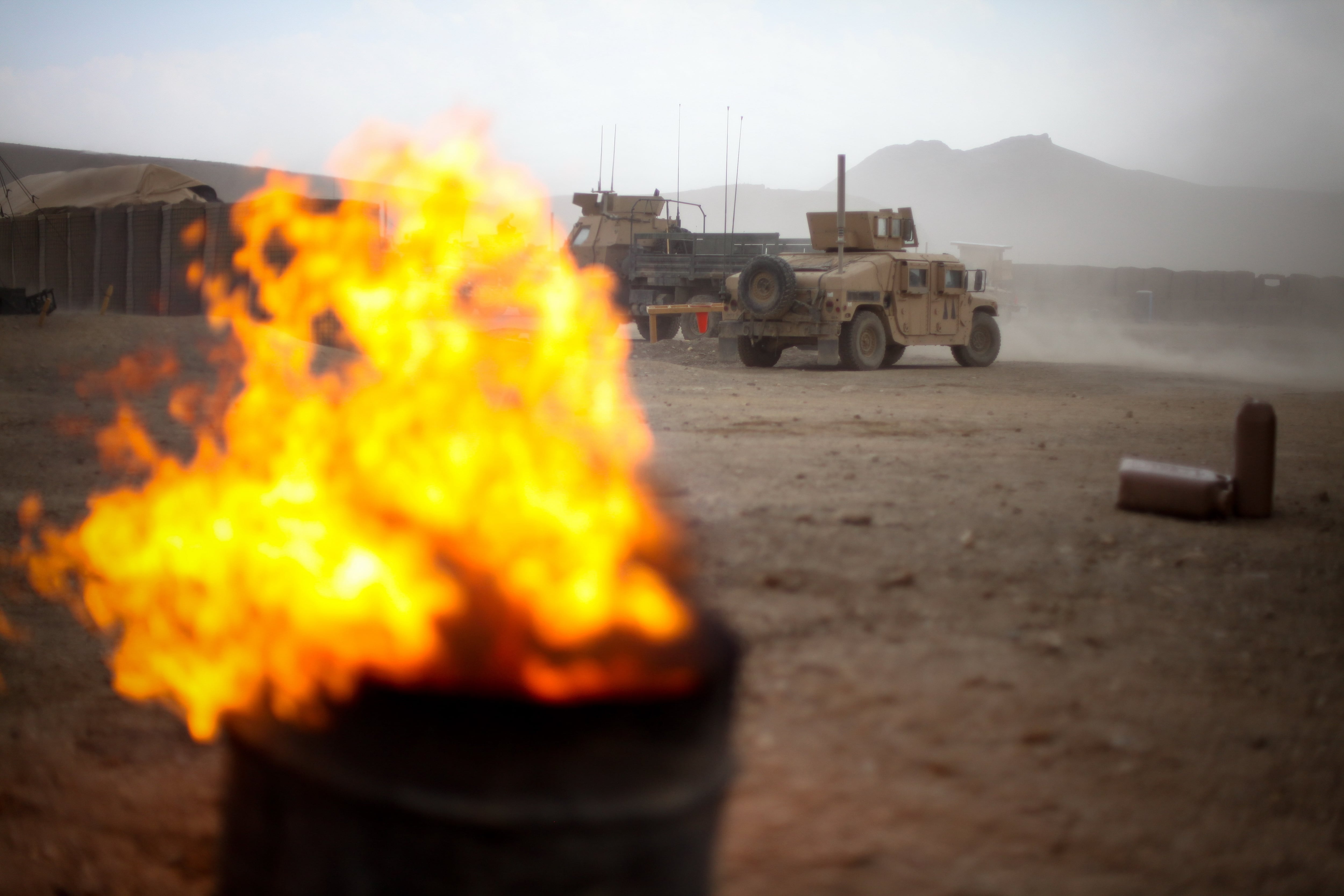The Pentagon acknowledges the risks of burn pits, which the U.S. military has used to get rid of human, food, equipment and other waste while downrange, and is looking for alternatives while pledging to do a better job tracking how exposure affects service members.
But there are no plans to stop using them.
Though burn pits are considered something of a last resort, according to Defense Department policy, there are still nine of them in operation, per an April report to Congress from the under secretary of defense for acquisition and sustainment. And despite some research into alternatives, nothing is off the ground yet.
In the report, the Pentagon acknowledges that burning hazardous waste, tires and plastic in open pits creates dangerous fumes, but they it is still done during deployments if the local combatant commander ― currently, they’re only used in U.S. Central Command ― can’t find a good alternative.
“Generally, the use of open burning is limited to short term contingency operations outside of the United States where no feasible alternative exists,” the report says. “For the longer term enduring locations DoD uses conventional solid waste management practices.”
As of March, according to the report, all of the U.S.-sanctioned burn pits are in the Middle East: seven in Syria, five of which are under military control and two by contractors; one military pit in Afghanistan; and one military pit in Egypt.
Veterans groups have been pushing for years for the Pentagon and VA to acknowledge the danger of inhaling their fumes.
The VA’s official position is that “research does not show evidence of long-term health problems from exposure,” though advocates claim that is based more on a lack of tracking of what’s being burned and the health outcomes of those who are around them.
They claim rare cancers, respiratory illness and other health issues in Iraq and Afghanistan veterans are the result.
“There’s no perfect study, but there is enough evidence to determine there is a high enough suspicion of a link,” Rep. Raul Ruiz, D-California, said in a March press conference on the issue. "We have veterans who are dying, so we have to act on that suspicion.”
The reason for the pits, which explains why there are so many more in Syria, is the small-scale, short-term nature of the operations they’re supporting. With no waste management infrastructure in place, either military or local civilian, the report says, they are the next best option.
Fewer than 500 people are stationed in the locations, according to the report, and they are not generally trained on waste management and may not produce enough to fit an incinerator’s minimum requirements.
RELATED

“Open burning remains a field expedient alternative to reduce waste volume and protect troops from disease,” the report says.
According to the report, the Pentagon has looked into incinerators in these locations, but they take up a lot of space, require a lot of skilled maintenance and use a lot of fuel for little return on converting waste to usable energy.
And DoD doesn’t have a supply chain for solid waste incinerators that can be taken downrange, the report says.
“Despite significant [research, design, test and evaluation] investment, no vendor or academic has been able to meet the basic DoD deployable incinerator requirements of scalability, transportability, reliability and fuel economy,” according to the report.
The National Defense Center for Energy and Environment has been looking into the possibility, though, of a system that can operate with the small, intermittent production of waste at these short-term outposts.
Until then, the report says, the Pentagon is trying to improve its procedures for monitoring burn pit smoke, reducing exposure and documenting any effects.
Meghann Myers is the Pentagon bureau chief at Military Times. She covers operations, policy, personnel, leadership and other issues affecting service members.





